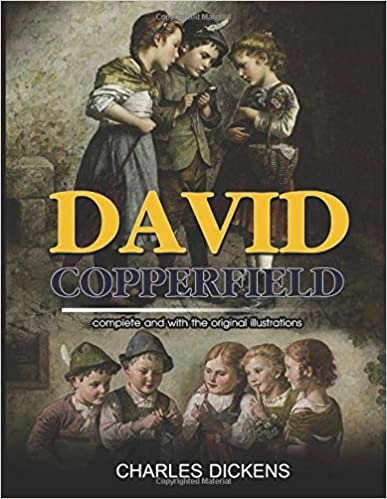Reading Level
What is the reading level of David Copperfield ?
Analysing the books in the series, we estimate that the reading level of David Copperfield is 6th and 7th grade.
Expert Readability Tests for
David Copperfield
| Readability Test | Reading Level |
|---|---|
| Flesch Kincaid Scale | Grade 7 |
| SMOG Index | Grade 9 |
| Coleman Liau Index | Grade 6 |
| Dale Chall Readability Score | Grade 6 |
Reading Time
19 hrs 55 mins
How long to read David Copperfield (Illustrated)?
The estimated word count of David Copperfield (Illustrated) is 298,685 words.
A person reading at the average speed of 250 words/min, will finish the book in 19 hrs 55 mins. At a slower speed of 150 words/min, they will finish it in 33 hrs 12 mins. At a faster speed of 450 words/min, they will finish it in 11 hrs 4 mins.
| David Copperfield (Illustrated) - 298,685 words | ||
|---|---|---|
| Reading Speed | Time to Read | |
| Slow | 150 words/min | 33 hrs 12 mins |
| Average | 250 words/min | 19 hrs 55 mins |
| Fast | 450 words/min | 11 hrs 4 mins |
- Authors
-
Charles Dickens
More about David Copperfield
298,685 words
Word Count
for David Copperfield (Illustrated)
538 pages
Pages
32 hours and 7 minutes
Audiobook length
Description
David Copperfield is the story of a young man's adventures on his journey from an unhappy and impoverished childhood to the discovery of his vocation as a successful novelist. Among the gloriously vivid cast of characters he encounters are his tyrannical stepfather, Mr Murdstone; his brilliant, but ultimately unworthy school-friend James Steerforth; his formidable aunt, Betsey Trotwood; the eternally humble, yet treacherous Uriah Heep; frivolous, enchanting Dora Spenlow; and the magnificently impecunious Wilkins Micawber, one of literature's great comic creations. In David Copperfield - the novel he described as his 'favourite child' - Dickens drew revealingly on his own experiences to create one of the most exuberant and enduringly popular works, filled with tragedy and comedy in equal measure. This edition uses the text of the first volume publication of 1850, and includes updated suggestions for further reading, original illustrations by 'Phiz', a revised chronology and expanded notes. In his new introduction, Jeremy Tambling discusses the novel's autobiographical elements, and its central themes of memory and identity.
